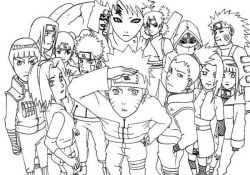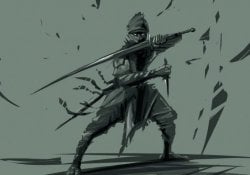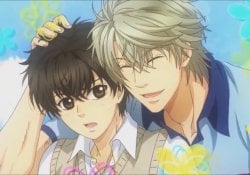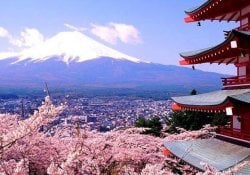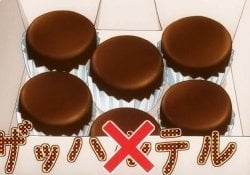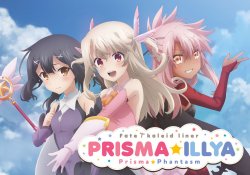Japan is a monarch country and consequently it will have a King to represent it, in Japan, known as Emperors.
Japan has had more than hundreds of Emperors, however, some Kings are separated by "Periods". One of the Periods and much commented and cited is the “Edo Period”. The Modern Era currently has 4 Emperors, one of them being the current Emperor Akihito.
And among them is Emperor Taishō. Representing the Taishō Period, where we walk towards the loss of power of the Emperor, crises followed by wars and changes of thoughts, leaving Feudal Japan behind.
Índice de Conteúdo
posthumous name
Posthumous can literally be translated as "After death", being also an honorary name that is given to emperors, nobles and in exceptions and in some cultures, this title is also given to officers and others.
In the case of Japan and in connection with the Emperors, the posthumous one is given to him according to the name of his kingdom. In Japanese culture there is also kaimyo, which is a Buddhist practice with the same objective, however, it is more used while alive.
But the posthumous name must not be confused with the name of an era and a temple. The name of era refers to the years in which an Emperor/Governor ruled a country, and its name after the reign is usually remembered with the era, but always referring to the posthumous.
Emperor Taishō - Yoshihito
His name was Yoshihito (嘉仁).
Emperor Taishō was the fifth son of the Emperor Meiji, born August 31, 1879. His death is recorded on December 25, 1925.
He was born at Aoyama Palace in Tokyo, the son of Meiji and lady-in-waiting Yanagiwara Naruko. As a practice and custom, he was given as the son of Empress Shōken. His brothers died as children, however, he lived on to fulfill his role as successor to the throne, but he had some health issues as well.
Yoshihito contracted meningitis three weeks after his birth, leaving him fragile in health, both physically and mentally. There were also rumors that he was a victim of lead poisoning, supposedly from the makeup used by his Wet Nurse.
Yoshihito had lessons from the same person who taught his father, Emperor Meiji. The teachings came directly from Nakayama Tadayasu at Aoyama Palace. He had several classes daily, but because of his fragile health, this process was slower, as he had constant fainting and fevers.
He was declared heir only on August 31, 1887. As crown prince, he was known as Tōgu (東宮).
Unlike his father, Yushihito was married before becoming Emperor. In 1900, he married Kujō Sadako (the future Empress Teimei), daughter of Prince Kujō Michitaka, head of the five main branches of the Fujiwara Clan.
Yushihito's Wife was chosen by Meiji. Having been valued primarily for her intelligence, good disposition and dignity – to complement Prince Yoshihito in areas where she was handicapped. The Akasaka Imperial Palace was built between 1899 and 1909, made for the couple, based on the Rococo style.
The Prince succeeded the throne at the age of 42. He lived for 57 years, having a reign of 14 years.
Reign (1912-1926)
The Taishō Reign was marked by the First World War. With Germany's enemy Japan, however, not having such interference outside its territory and Asia.
Western forces gave Japan several opportunities, such as the conquest of Germanic territories and also with demands made on China. Japan demanded from China new territorial concessions in its favor, with the ceding on behalf of China.
As for the economy, Japan was very successful during the Taishō period. Without European interference, it managed to monopolize the Asian market, as Europe was weakened, due to the wear and tear caused by the War. In addition to having made large investments in the naval industry. Industrialized products, previously supplied by Germany, began to be produced by the Japanese themselves, as was the case with chemical products, medicines, paints and fertilizers. In addition, the Japanese conquered the Asian spinning and weaving market, which formerly belonged to the British.
However, it was a temporary growth. Europe returns from its crisis, and Japan knows the reverse of capitalist success. Japanese products lose market share, with huge price drops. Having great aggravation with the earthquake that occurred in 1923 in Tokyo.
The article is still halfway through, but we recommend also reading:
Some curiosities about the Taishō Period
- In 1921, he handed over the regency to his eldest son, Hirohito, due to health problems;
- He showed skills in some areas, such as Horseback Riding. However, he did not demonstrate skills in areas that required higher intellect. But he made a great investment in languages, taking classes in French, Chinese, and also History.
- Due to Western influence, he used to add foreign words to his lines, which greatly annoyed his father, Meiji;
- He and his wife had 4 children, of which the fourth died in the middle of childbirth.
- Japan had the ambition of becoming one of the greatest world powers. And in 1918, it was invited to attend the Peace Conference in Versailles, alongside major countries.
- During this period, the great Japanese banks were also founded and created;
- There were also great foundations in democratic ideals. Therefore, having a cultural change, in which women gain more power in the country and democracy being established, but not lasting long;
- Emperor Taisho died of pneumonia in 1926.
- He was considered the Emperor of Tokyo. For being the first to live and live near the capital for a lifetime;
- Emperor Taishō's body is found on the outskirts of Tokyo Prefecture;
- The end of the Period was marked by the rise of nationalist ideas, with the support of the military;
Now let's consider 1 thing.
After the Meiji Period, and with the First World War, the Emperor totally lost his power to rule. For many centuries there was this policy that “the violence and military operations of a country do not concern the Emperor”. But this was something instituted as Law only later, in the middle of the 20th century. However, we see that the Emperors gradually lose their powers after the Meiji Reign and Restoration. This will be discussed in more depth in another article.
Of course, this is just a summary of the Emperor and what happened in his era and afterwards. This is a very delicate and extensive subject that may require even an entire website to study the entire topic. If you want to delve deeper into the subject, be prepared to read a large book or many wiki pages.

